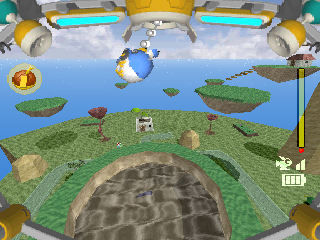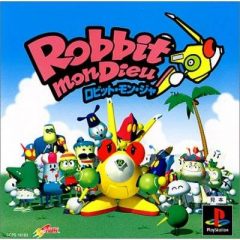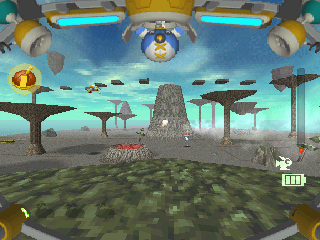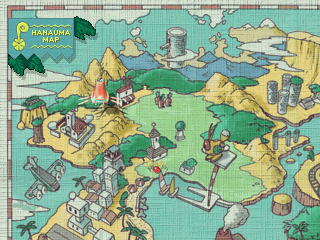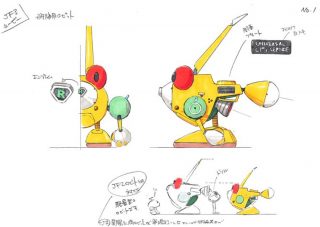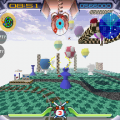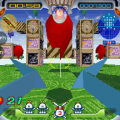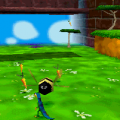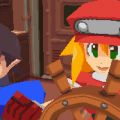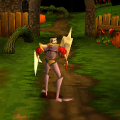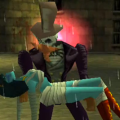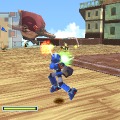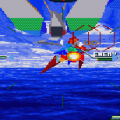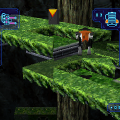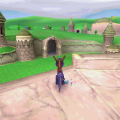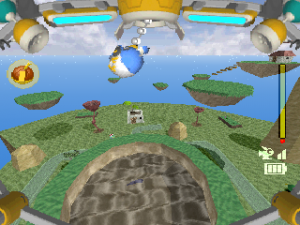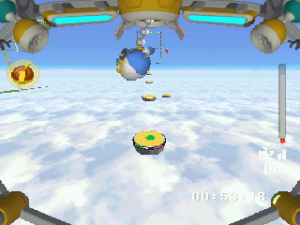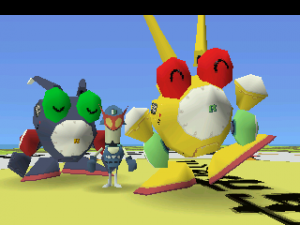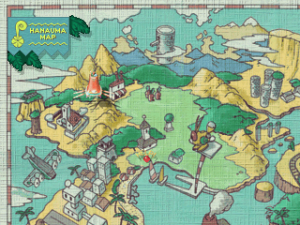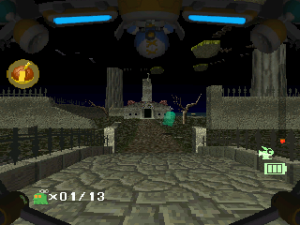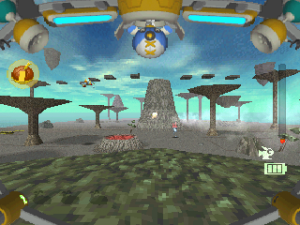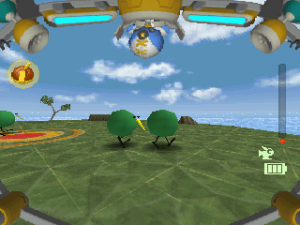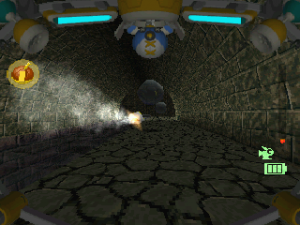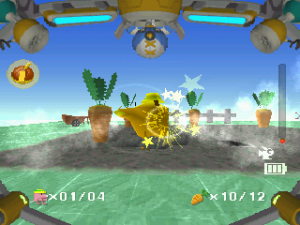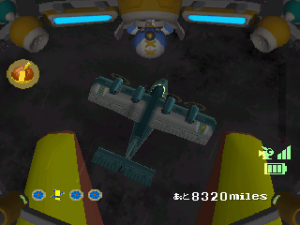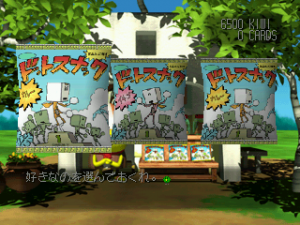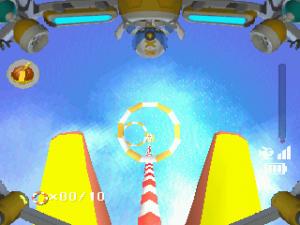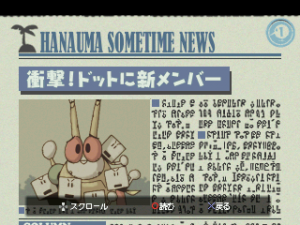The third and final Jumping Flash! game was, as with Pocket MuuMuu, developed by Sugar & Rockets, rather than the original team. The title, translated from French, means “Robbit My God!”, a ridiculous title if there ever was one.
The Baron Aloha is now gone for good and peace has come to the galaxy. So what’s an out-of-work hero to do? Well, Robbit becomes the equivalent of a mercenary Boy Scout, doing good deeds around Hananuma Island in exchange for a bit of cash. A map screen indicates locations where various folk are in need; visit and you’ll get a quick rundown of the goals and a cutscene with Robbit listening to the customer-in-need. In other words, the open-ended scavenger hunts that comprised the earlier games have been replaced with mission-based levels.
In some levels, someone will hop on your back, and you just need to take them to a goal. In others, you need to deliver items between two places. Or you need to kill a certain number of enemies in a level. Some areas are just platforming trials, as you attempt to reach a goal without falling off the stage. Since the game was never translated into English, it may be difficult to figure out exactly what you’re supposed to be doing, especially if you’re under a time limit, but usually it’s pretty obvious.
The levels in Robbit Mon Dieu are much smaller, and much shorter, than the first two games, seldom lasting more than a few minutes. This leads to a very disjointed feel, as sometimes the loading times and cutscenes last longer than the time you spend actually completing a level. The goals themselves are often very simple too, and combat, outside of a handful of boss battles, is sparse. The first two Jumping Flash! games were hardly complicated, but without the huge levels to explore, the world ends up feeling dull in comparison. This is somewhat made up for with the oddball cast of characters, like the carrot obsessed farmer and the little girl who’s always happening upon gigantic red buttons, but most of this humor is lost if, again, you don’t understand Japanese.
Beating levels will earn you currency, here dubbed “Kiwis”. Outside of completing as many missions as possible, the main goal is to obtain as many dot cards as possible, which feature characters and other strange bits from the Jumping Flash! universe. It’s really not a compelling enough of a reason to give the game enough replay value though. Additionally, once you complete thirty missions, then you’re forced into the final level, leaving any subplots uncompleted.
The mechanics are largely the same as the previous games. You only have one special item slot rather than three. There’s also a pounding technique, executed by jumping high then hitting Triangle, which can be used to destroy certain things on the ground.
In the end, Robbit Mon Dieu is a disappointment, and its lack of a localization was no great tragedy.
Legacy
The Jumping Flash! games are very interesting because they get the title “semi-obscure” or “never-popular.” And on certain game forums it is said that Jumping Flash! would have been huge if not for marketing/Super Mario 64/fan apathy etc. Unlike the Super Mario or early Sonic games, Jumping Flash! fails in appealing to gamers of all levels. Robbit is always just a little too overpowered for his environment. Enemies are inconveniences instead of obstacles, and Exact/Sugar and Rockets never push the game mechanics in the way that Nintendo has with Super Mario. There’s no difference between the mechanics of Geograph Seal and Robbit Mon Dieu, and that is a pity.
But unlike Super Mario 64, which has loads of replay value, the Jumping Flash! games’ mystique fades after a playthrough. Yes, the “extra” mode extends the gameplay, as does the time-attack mode, but there isn’t much that’s hidden about the Jumping Flash! games. They’re almost too straightforward. There aren’t any hidden warps tunnels, or new techniques to learn, or crazy power-ups that can be acquired if you do.
What’s kept Robbit on the periphery of pop culture instead of fading into obscurity has to be that Sony owns the series, thus it’s been released to the PSN and their Android Xperia Play system. It undoubtably helps that the Jumping Flash! games have a “pick-up-and-play” breeziness to them. The games are very straightforward. There aren’t multitudes of techniques to learn, the worlds are colorful, and gameplay has an addictive quality.
Does Jumping Flash! deserve more attention than it currently receives? Yes. The first two games especially are excellent and have solid game mechanics, and are worth checking out
